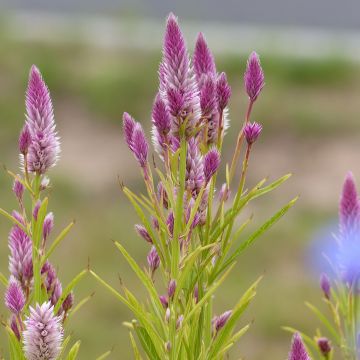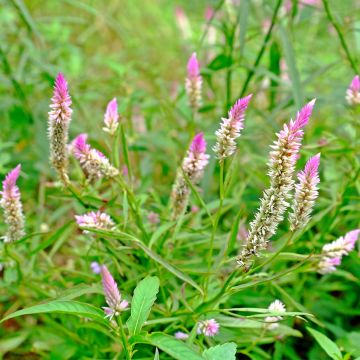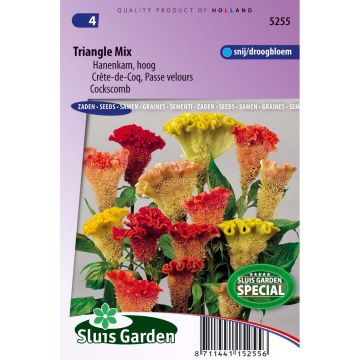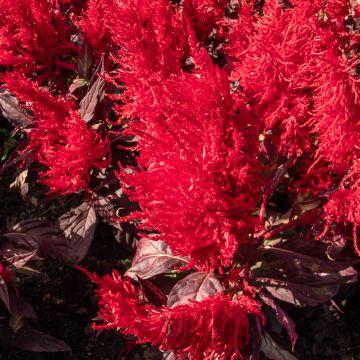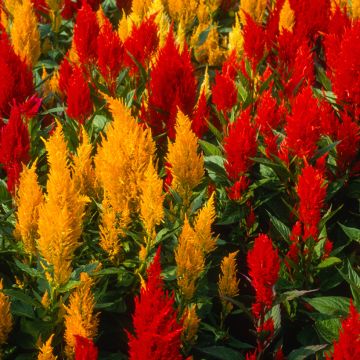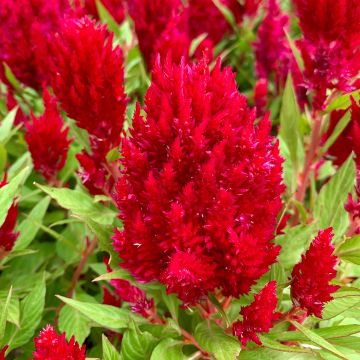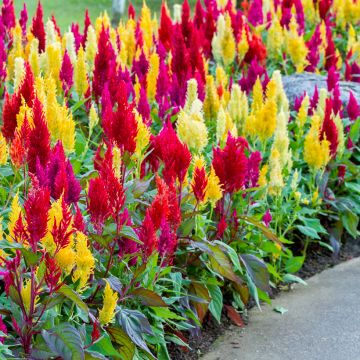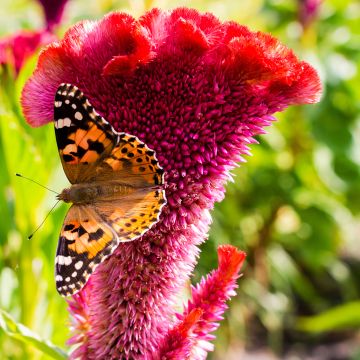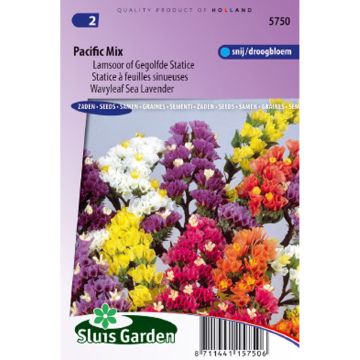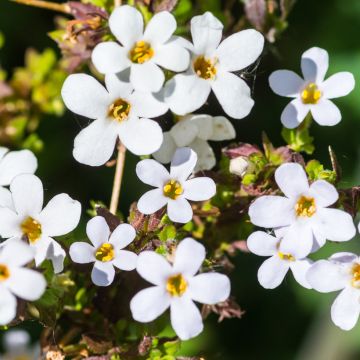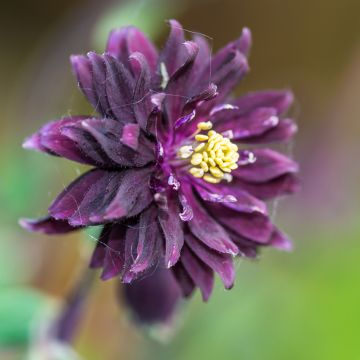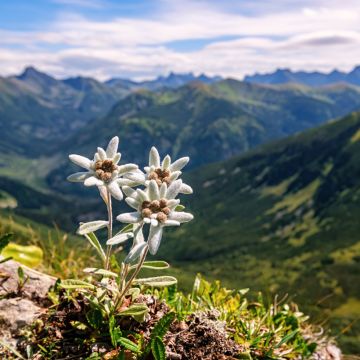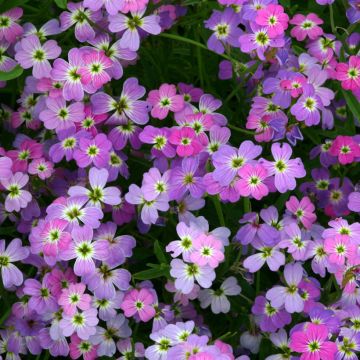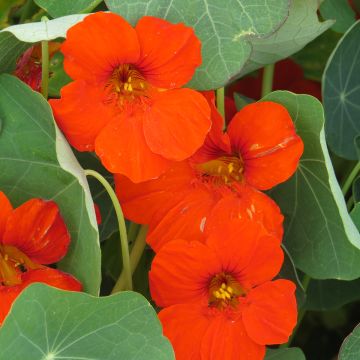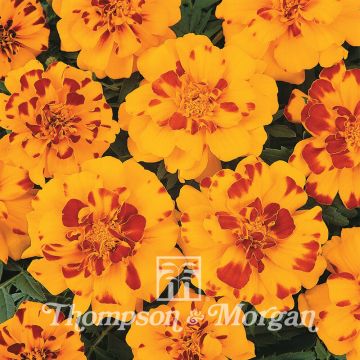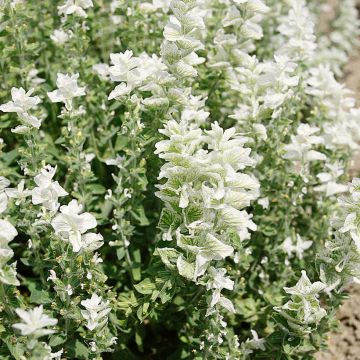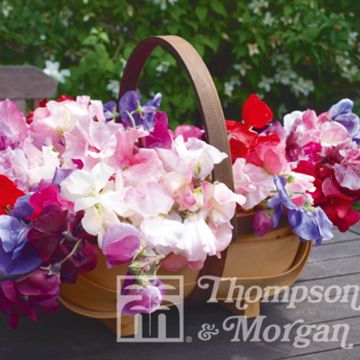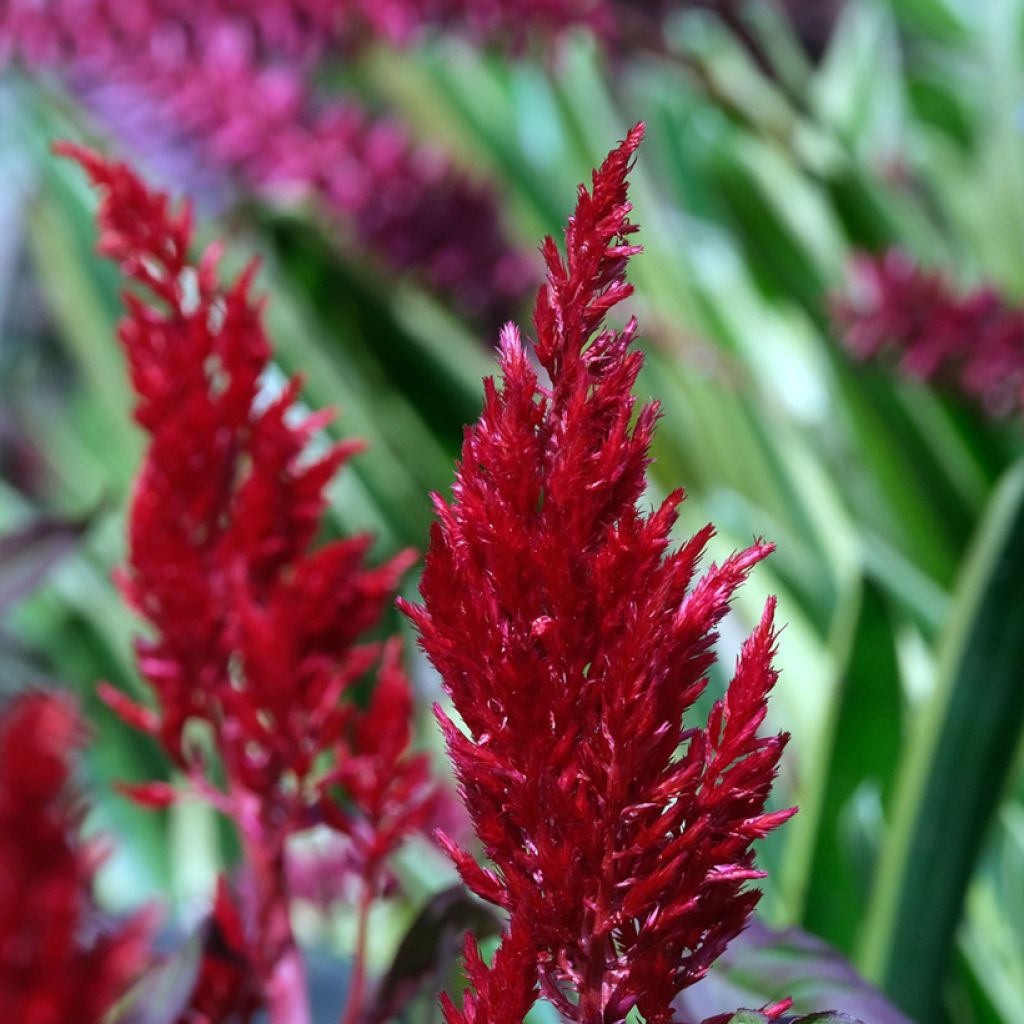

Celosia argentea var. cristata Forest Fire seeds - Cockscomb flower
Celosia argentea var. cristata Forest Fire seeds - Cockscomb flower
Celosia argentea plumosa Forest Fire
Plumed cockscomb, Cockscomb flower
This item cannot be shipped to the selected country
Dispatch by letter from €3.90
More information
Schedule delivery date,
and select date in basket
This plant carries a 6 months recovery warranty
More information
We guarantee the quality of our plants for a full growing cycle, and will replace at our expense any plant that fails to recover under normal climatic and planting conditions.
Seed-only orders are dispatched by sealed envelope. The delivery charge for seed-only orders is €3.90.
Does this plant fit my garden?
Set up your Plantfit profile →
Description
Celosia 'Forest Fire' is a flamboyant cultivar of Celosia argentea var. cristata, appreciated for its compact habit and its shiny flowering, scarlet red plumes, carried by crimson red stems and red bronze green foliage. Throughout the summer, this annual adds a touch of colour to your flowerbeds, borders, and containers. Its brilliant flowering, with 10 to 14 flowers per plant that can last up to 8 weeks, allows you to create beautiful bouquets. The plant tolerates heat and drought well. Its sowing and cultivation are easy.
Celosia argentea var cristata, also called Velvet Flower by Mexicans, belongs to the Amaranthaceae family. It is a frost-sensitive plant grown as an annual.
The 'Forest Fire' variety reaches up to 75 cm high by 40 cm wide. It easily finds its place in a border or in a container. It adds colour to your compositions with its red flowers that bloom from June to October. They are notably carried by bright red stems. They are nectar-rich and attract bees and butterflies. Its green bronze turning red foliage completes the show. The leaves of young plants are generally green, the colouration appears over time, especially when the plant benefits from sunny exposure and warmth.
The flowers of 'Forest Fire' can be used in fresh or dried bouquets as they retain their beautiful colour. To dry them, hang them upside down in a shaded place for two months. In the garden or in a pot, pair them with yellow-flowered lantanas like Evita Yellow or white-flowered Woodland Sages Bumblesnow.
Report an error about the product description
Flowering
Foliage
Plant habit
Botanical data
Celosia
argentea plumosa
Forest Fire
Amaranthaceae
Plumed cockscomb, Cockscomb flower
Cultivar or hybrid
Other Graines de Célosie - Celosia
Planting and care
The Forest Fire Celosia appreciates warmth. It will thrive in a border or a pot placed in the sun. Sow at the end of winter (February-March) in a warm place (the ideal temperature is 20°C). Do not cover the seeds with soil. After 3 to 4 weeks, transplant the young plants into pots. The young leaves are usually green, the bronze colouring develops later. Wait for about 4 more weeks of hardening (temperature between 14 and 18°C) and especially the end of frosts before planting your celosias in moist and well-drained soil. Space them approximately 20 cm apart.
Sowing period
Intended location
This item has not been reviewed yet - be the first to leave a review about it.
Flower seeds
Haven't found what you were looking for?
Hardiness is the lowest winter temperature a plant can endure without suffering serious damage or even dying. However, hardiness is affected by location (a sheltered area, such as a patio), protection (winter cover) and soil type (hardiness is improved by well-drained soil).

Photo Sharing Terms & Conditions
In order to encourage gardeners to interact and share their experiences, Promesse de fleurs offers various media enabling content to be uploaded onto its Site - in particular via the ‘Photo sharing’ module.
The User agrees to refrain from:
- Posting any content that is illegal, prejudicial, insulting, racist, inciteful to hatred, revisionist, contrary to public decency, that infringes on privacy or on the privacy rights of third parties, in particular the publicity rights of persons and goods, intellectual property rights, or the right to privacy.
- Submitting content on behalf of a third party;
- Impersonate the identity of a third party and/or publish any personal information about a third party;
In general, the User undertakes to refrain from any unethical behaviour.
All Content (in particular text, comments, files, images, photos, videos, creative works, etc.), which may be subject to property or intellectual property rights, image or other private rights, shall remain the property of the User, subject to the limited rights granted by the terms of the licence granted by Promesse de fleurs as stated below. Users are at liberty to publish or not to publish such Content on the Site, notably via the ‘Photo Sharing’ facility, and accept that this Content shall be made public and freely accessible, notably on the Internet.
Users further acknowledge, undertake to have ,and guarantee that they hold all necessary rights and permissions to publish such material on the Site, in particular with regard to the legislation in force pertaining to any privacy, property, intellectual property, image, or contractual rights, or rights of any other nature. By publishing such Content on the Site, Users acknowledge accepting full liability as publishers of the Content within the meaning of the law, and grant Promesse de fleurs, free of charge, an inclusive, worldwide licence for the said Content for the entire duration of its publication, including all reproduction, representation, up/downloading, displaying, performing, transmission, and storage rights.
Users also grant permission for their name to be linked to the Content and accept that this link may not always be made available.
By engaging in posting material, Users consent to their Content becoming automatically accessible on the Internet, in particular on other sites and/or blogs and/or web pages of the Promesse de fleurs site, including in particular social pages and the Promesse de fleurs catalogue.
Users may secure the removal of entrusted content free of charge by issuing a simple request via our contact form.
The flowering period indicated on our website applies to countries and regions located in USDA zone 8 (France, the United Kingdom, Ireland, the Netherlands, etc.)
It will vary according to where you live:
- In zones 9 to 10 (Italy, Spain, Greece, etc.), flowering will occur about 2 to 4 weeks earlier.
- In zones 6 to 7 (Germany, Poland, Slovenia, and lower mountainous regions), flowering will be delayed by 2 to 3 weeks.
- In zone 5 (Central Europe, Scandinavia), blooming will be delayed by 3 to 5 weeks.
In temperate climates, pruning of spring-flowering shrubs (forsythia, spireas, etc.) should be done just after flowering.
Pruning of summer-flowering shrubs (Indian Lilac, Perovskia, etc.) can be done in winter or spring.
In cold regions as well as with frost-sensitive plants, avoid pruning too early when severe frosts may still occur.
The planting period indicated on our website applies to countries and regions located in USDA zone 8 (France, United Kingdom, Ireland, Netherlands).
It will vary according to where you live:
- In Mediterranean zones (Marseille, Madrid, Milan, etc.), autumn and winter are the best planting periods.
- In continental zones (Strasbourg, Munich, Vienna, etc.), delay planting by 2 to 3 weeks in spring and bring it forward by 2 to 4 weeks in autumn.
- In mountainous regions (the Alps, Pyrenees, Carpathians, etc.), it is best to plant in late spring (May-June) or late summer (August-September).
The harvesting period indicated on our website applies to countries and regions in USDA zone 8 (France, England, Ireland, the Netherlands).
In colder areas (Scandinavia, Poland, Austria...) fruit and vegetable harvests are likely to be delayed by 3-4 weeks.
In warmer areas (Italy, Spain, Greece, etc.), harvesting will probably take place earlier, depending on weather conditions.
The sowing periods indicated on our website apply to countries and regions within USDA Zone 8 (France, UK, Ireland, Netherlands).
In colder areas (Scandinavia, Poland, Austria...), delay any outdoor sowing by 3-4 weeks, or sow under glass.
In warmer climes (Italy, Spain, Greece, etc.), bring outdoor sowing forward by a few weeks.

































